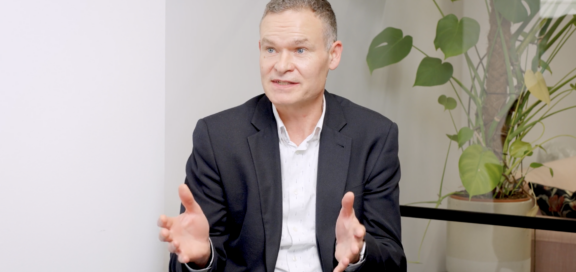

Giving people the tools to talk: How effective rare disease marketing works
Marketing around rare diseases presents a set of challenges quite distinct from those associated with more common conditions.
There are a host of diseases that, whilst debilitating and life-threatening, are more common and therefore widely recognised – both in terms of their existence and the patient experience. We have all been touched by ‘cancer’. This in turn makes them more straightforward to talk about, as the medical community is at least aware of them (see our recent article on disease awareness).
On the other hand, with rare diseases, your audience will be either clinicians who are world experts in this therapy area or people who have never heard of the condition. Catering to both extreme ends of the awareness spectrum requires an acute understanding of the science involved (as there are often seriously complicated aspects to the disease) and an empathetic approach, placing the patient experience front and centre in any campaign.
Marketing with sensitivity turned up to 11
Rare disease marketing is perhaps the best example of Pharmacohesion® in action. The field demands a rigorous approach to working through the insights around the patient, the impact on their lives both of the disease and the treatment, and then working with ways to convey everything HCPs need to know about it as clearly as possible to effect change.
You have to explore every element of the patient’s story – what does it mean to be living with a particular rare disease? To the patient and also their family?
As mentioned, common conditions are well known and easy to talk about. In contrast, the distinct lack of familiarity with rare diseases makes them very hard to explain. It’s difficult to say why things are happening when people have never heard of the disease and what might cause it.
This means we, as medical professionals, have to be particularly sensitive towards the patients’ experience at every stage, from when they may be unaware of the disease to them being aware of initial symptoms, the disease’s impact, the science behind why it happens and finally the possible treatment.
Rare Disease Day (annually on February 28th) might be a collective raising of awareness about rare diseases in general and everyone who suffers with one. However, when there are maybe only a handful of cases per country, it’s important to realise each disease, and often each instance, still needs to be treated on a highly individual basis.
Explaining the complex causes of a rare disease
In pharma, it might be said that all major diseases (except for some neurological disorders such as Parkinson’s) are fairly well handled or controlled. If identified early enough, treatments can sometimes ensure you die with the disease rather than of it.
With rare diseases, however, there are usually complex genetic or physiological reasons for them occurring, some of which may not be fully understood. Therefore, they are more difficult to explain, and to treat. This sets a high bar for marketers on the level of scientific understanding they need and the way they convey information about the disease and its treatment.
The building blocks of trust
Our role as marketers in the rare disease field is to create material that speaks primarily to the clinicians who may need to treat a patient with a rare disease, and therefore also give them the means to have effective discussions with their patients.
Clinicians need to understand why the disease exists and why the specified treatment works. Patients need to understand why the condition does what it does, why their bodies are changing in this way, and why the treatment works.
In both cases, the target audience will need to feel trust in the science and in the person delivering the information to them. This means, as marketers, we require a sound scientific understanding of the disease – its causes and methods of treatment. Grounding everything we say in clearly-phrased scientific facts will engender trust.
Facts tempered with care
However, it’s not only pure facts that will win over the hearts and minds of HCPs and their patients. Every element of a rare disease campaign needs to dial up its focus on patient care and ensure all language is in tune with therapeutic sentiment.
This means that, as well as deeply understanding the science, your marketers must also be empathetic to the patient journey. What will be happening to them as they go from noticing symptoms to seeing a specialist, undergoing tests and receiving their diagnosis? What will they be feeling, and how will their age or experience help them understand what’s happening, and deal with it emotionally?
To deliver an effective solution – one that respects both the patient’s feelings and the science around their condition – you need to be able to communicate complicated information in a straightforward way.
The key point is to give your audience clear, easy to understand explanations in a language and tone of voice they will appreciate. In all our work with rare diseases such as Fabry disease, PNH, LHON, aHUS and others, the success of our campaigns has hinged around our ability to render a deep understanding of the condition and all the elements around it into plain, easily digestible terms. To make the complex simple.
Make sure your rare disease treatment lands with those who need it most
Please get in touch with the Dice team to talk over a strategy that will ensure your treatment reaches the people in a position to make the most difference to their patients.





